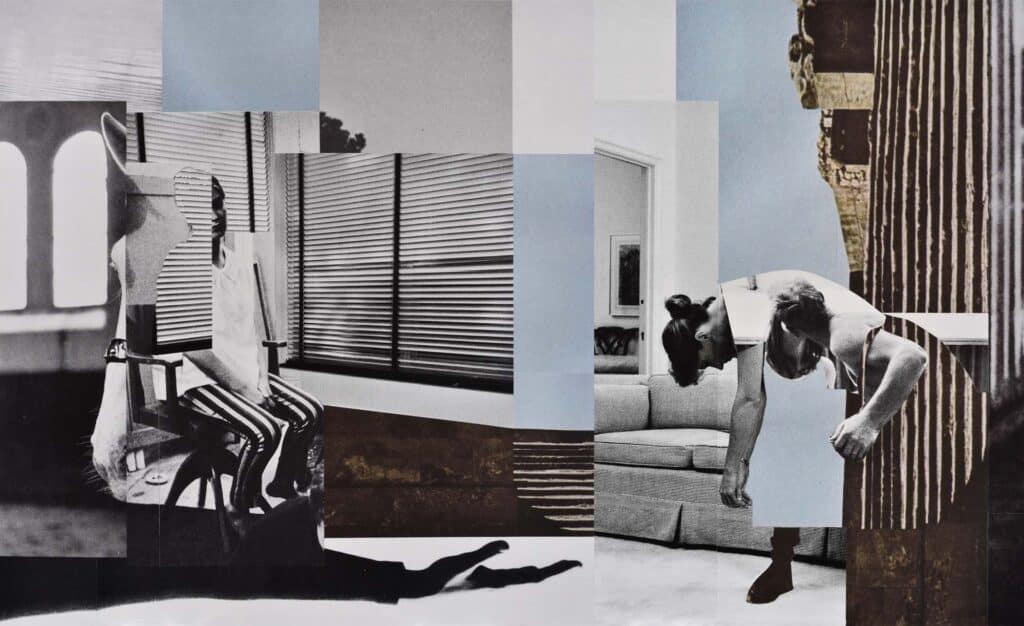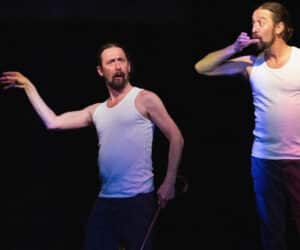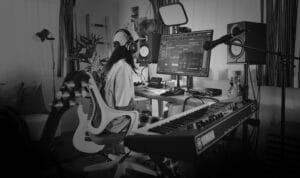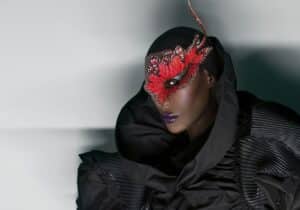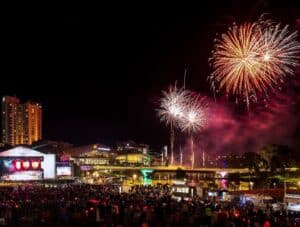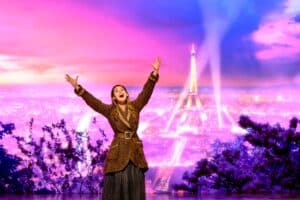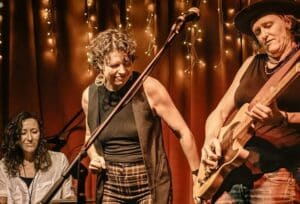‘Art allows us to see ourselves and society anew. It taps into the human condition and its pursuit of knowledge through curiosity and sensation. It recognises our shared, lived experience and connects our thoughts, emotions and feelings to the world around us.’ José Da Silva
Opening on 29 February, the 18th Adelaide Biennial of Australian Art: Inner Sanctum, curated by José Da Silva, assembles 24 leading artists and poets for an exhibition that can be seen, heard, and felt at the Art Gallery of South Australia until 2 June.
As part of the 2024 Adelaide Festival, Inner Sanctum on Kaurna Yerta unfolds across free exhibitions of new and recent works, live performances, music and public programs, all highlighting our engagement with the world and each other.
Curator José Da Silva says, ‘The idea of an ‘inner sanctum’ evokes the private, protected, or sacred spaces we create in our homes and communities as a refuge and sanctuary, as well as the faculty of imagination, which allows us to see culture and society differently. Within the exhibition, this takes place in homes and gardens and on walking tracks, and in memories and stories of family and ancestors. It is also seen in locations of special knowledge, sacred activities, cultural environments, and, importantly, in the working spaces of artists and the art museum itself.’

The public are invited to attend the opening weekend, which begins on Thursday, 29 February, with a special event on the forecourt of the Gallery on North Terrace. Highlights include a yoyi (dance) performance by artists from the Tiwi Islands, the inaugural ringing of a new bell for the city by Lawrence English and the newly commissioned choral work‘All Flesh is Fire’ performed by the Adelaide Chamber Singers. The Vernissage opening weekend presents opportunities to hear from the artists and gain deeper insight into their work and lived experience.
Minister for the Arts Andrea Michael MP said, ‘South Australia led the way when it launched the first Biennial with the Adelaide Festival in 1990. 34 years on, the Adelaide Biennial of Australian Art continues to play a critical role nationally in connecting Australian audiences with the contemporary artists of our time.’
This year’s Biennial is conceived and presented across the entire Gallery in five parts: The Inland Sea; A Clearing, A Periphery; The River Path; A Quiet Spot; and, finally, The Writing of Love and Finding It. Curator José Da Silva describes some of the highlights.
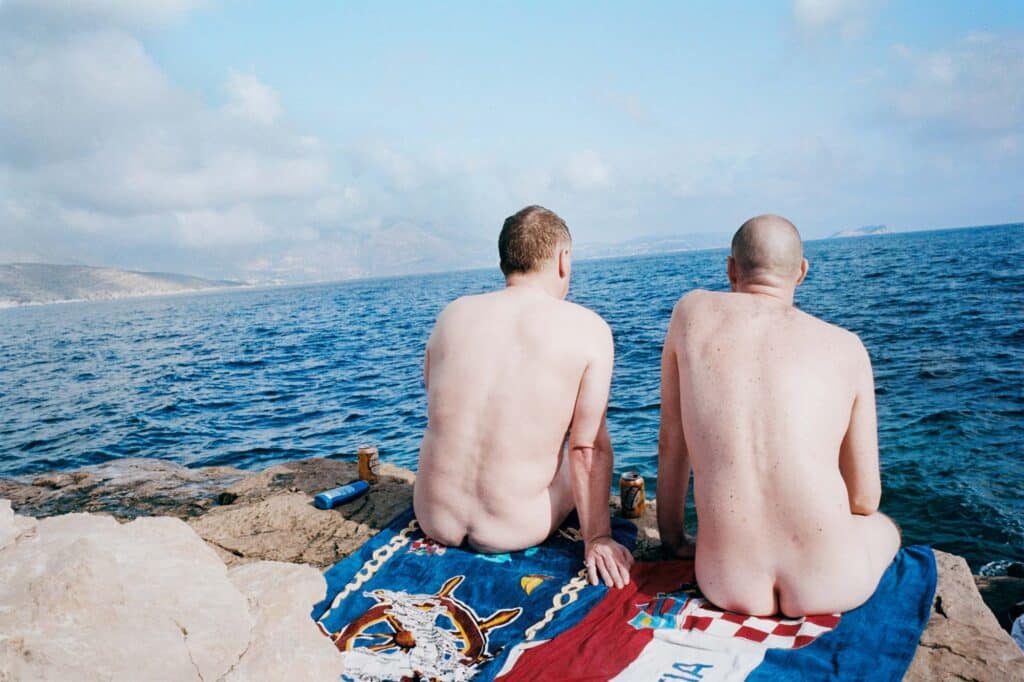
Part 1: The Inland Sea begins in South Australia’s Kaṉku-Breakaways and introduces ideas of deep time, local knowledge and stewardship of Country through painting, bush ballads and poetry.
- George Cooley paints these spectacular landscapes and uses opalescent colours to reveal a kaleidoscope of opal beneath the earth’s surface.
- Be transported to Cooley’s hometown of Cooper Pedy in The Studio, AGSA’s free, hands-on activities space for art lovers of all ages presented by the James & Diana Ramsay Foundation. Visitors will be inspired by Cooley’s stories of opal prospecting to create artworks revealing a spectrum of colours like precious gems.
Part 2: A Clearing, A Periphery features work that conjure expressions of time, atmosphere and memory and includesJessica Loughlin, Teelah George, Lawrence English, Clara Adolphs and Seth Birchall. Jessica Loughlin in collaboration with the late designer Khai Liew, has created the site-specific glass sculpture solari. A Latin term describing the experience of solace and being consoled, solari is Liew’s final project.
- Teelah George ongoing project, Sky piece maps the colour of the sky through large-scale embroideries. ForInner Sanctum, the artist presents her most ambitious Sky piece alongside a collection of key earlier works, marking the first opportunity for the series to be viewed together.
- Kate Llewellyn presents a new commissioned poem ‘Faith’ that has a second life in a composition by Anne Cawrse, performed live by Adelaide Chamber Singers, known for their contemporary presentation of madrigals and sacred music.
- Lawrence English’s project Proximities invites the public to become part of a city-wide performance. Across two nights, historic bells of Adelaide will be activated in conversation with English’s new 712-kg bell fabricated in Castlemaine by master bell founder Anton Hassell.
- Seth Birchall’s landscape paintings are ‘time of the day’ paintings, capturing a mood and sensibility of light at sunrise and sunset – liminal times that hint at the promise of something new. Additionally, a custom-made bench, made in collaboration with designer Jonathan West, encourages audiences to contemplate nature in a reflective way.
- Clara Adolphs paints a vast suite of paintings depicting people at dusk, and moments of leisure, with bodies meandering and unwinding in nature, sometimes alone or in the company of others.
Part 3: The River Path considers relationships between the body and belonging, ancestral knowledge and spiritual guidance, and speaks to conceptions of the spirit in First Nations and non-Indigenous communities. It features works byAli Cobby Eckermann, Kaye Brown, Christopher Bassi, Ruha Fifita, Marikit Santiago, Nik Pantazopoulos andKhaled Sabsabi.
- Ali Cobby Eckermann new series of photographs is a travelogue of healing on Country based around her new verse novel She is the Earth, 2023.
- Kaye Brown draws on the longstanding visual languages of the Tiwi Islands to create contemporary bark paintings celebrating connections between Country, family and ceremonial practice.
- Christopher Bassi infuses his representational paintings with a sacredness honouring both Torres Strait Islander visual and material culture and the forms of spiritual belief encapsulated by its traditions and customs.
- Ruha Fifita with the help of her family in Australia and Aotearoa New Zealand, has created a large-scale ngatu, a painted bark cloth made from Mulberry tree bark that is deeply embedded within Tongan culture.
- Marikit Santiago’s work also grapples with ideas of familial and cultural inheritances. Yet for her they exist in the complex converging of religion, culture and gendered expectations from her position as Filipina–Australian. Her figurative paintings cast her own family in biblical and mythological scenes inspired by the iconography of faith and folklore.
- Khaled Sabsabi’s installation Knowing Beyond, 2024, includes double-sided paintings made using coffee grounds which he describes as ‘a residue of memory’. Sabsabi’s project for Inner Sanctum extends to connecting Muslim communities between Western Sydney and Tarntanya Adelaide and culminates in a presentation of Anasheed (a work of vocal music) at AGSA.
- Nik Pantazopoulos’s drawings of doors link his memories of his social and sexual experience informed by his Greek migrant upbringing and queer identity.
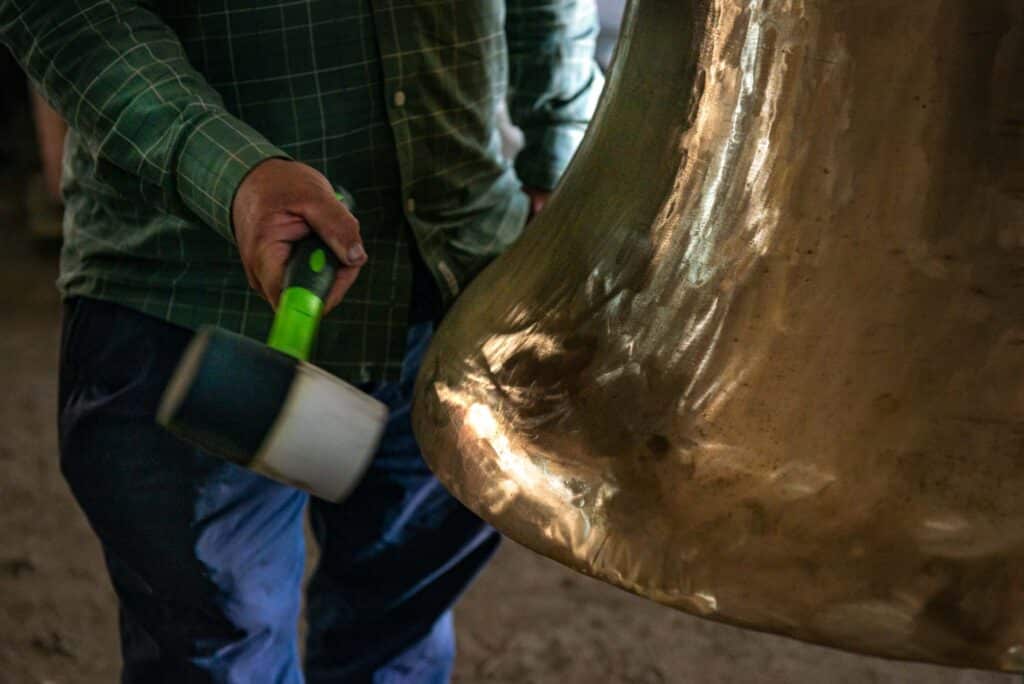
Part 4: A Quiet Spot features scenes of solitude and bodies seeking connection and incorporates experiences of domesticity, the natural world and locations with accumulated histories, including archives and episodes from art history and mythology. It includes works by Tina Stefanou, Lillian O’Neil, Jasmine Togo-Brisby, Jacobus Capone, Peter Maloney, James Barth, and Heather B. Swann.
- Tina Stefanou’s video installation Hym(e)nals, 2022, features young women and their retired horses communicating through non-verbal sounds and gestures. Stefanou also presents a series of large-scale performances with Adelaide teenagers called Dance the War of Proximity, 2024 with events taking place at Mount Lofty Botanic Garden, Adelaide Botanic Garden, and Adelaide Zoo, before finishing at AGSA in April.
- Lillian O’Neil’s photographic collages take inspiration from her experiences of motherhood and reflect the liminal space shared by women following the birth of a child, whereby time and place are compressed.
- Jasmine Togo-Brisby’s installation honours and acknowledges South Sea Islanders brought to Australia for indentured labour. As Above, So Below, 2022–23, takes the form of hundreds of replica Tam tam (slit drum) sculptures, cast from white plaster, which represent the bodies detailed in engravings made for the British slave ship Brookes, which began transporting people between Africa and Jamaica in 1781.
- Jacobus Capone’s video installation Forewarning (Act 1), 2023 shows the artist dragging a hunting knife across the face of a glacier in a tense and alarming acknowledgment of climate change and humanity’s imprint on nature.
- Depth of My Soul, 2022, is one of the late Peter Maloney’s last paintings. The work is characterised by his use of abstract imagery and script and will be accompanied by a suite of previously unseen drawings and photographs.
- In Stone Milker, 2024, James Barth’s avatar undertakes a series of performative gestures in videos and paintings to farewell iterations of past selves.
- Heather B. Swann’s installation ponders ideas of finality. Last night on Earth, 2024, assembles an evocative set of sculptures and paintings to offer a space for contemplating our fading memories and the joy of letting go.
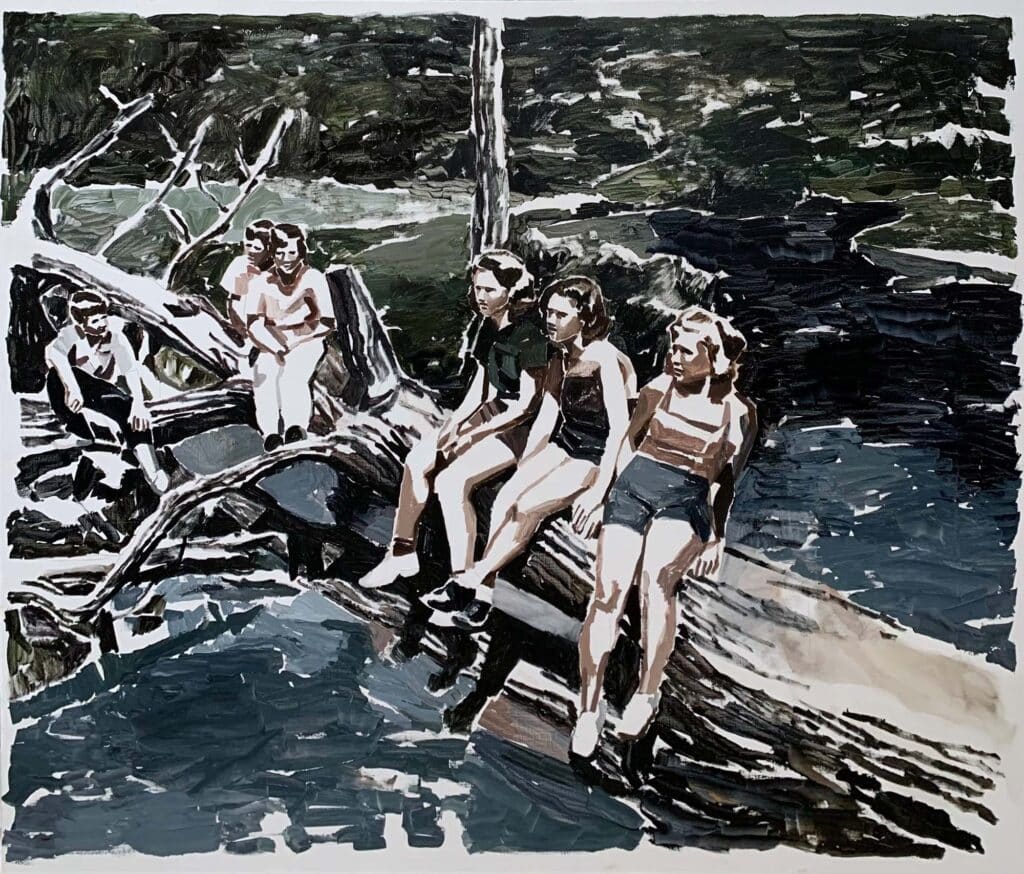
Part 5: The Writing of Love and Finding It provides a coda for the exhibition and comprises a community choir and a machine-learning work that envisions the profound physicality of love. In this final section, Jazz Money and Paul Knight propose love as the defining characteristic of human consciousness.
- Jazz Money’s poem This is how we love is performed by the Sydney Gay & Lesbian Choir, symbolising the unity and diversity of human experience, emotions and perspectives on love.
- Paul Knight’s Naked Souls, 2023, assesses the limitations of artificial intelligence to comprehend human love by revealing an AI-generated conversation between two lovers.
AGSA Director Rhana Devenport ONZM says, ‘Empathy is ever-present in this year’s Biennial; now more than ever, people are seeking places of refuge and sanctuary. The 2024 Adelaide Biennial enlivens our imagination with diverse expressions of belief, emotion, and the intricacies of human experience. We invite you to take the time to visit next year to explore this thoughtful and timely exhibition and discover your inner sanctum.’
Presented throughout AGSA, the 18th Adelaide Biennial of Australian Art: Inner Sanctum will be presented from Friday 1 March to Sunday 2 June 2024 as part of the 2024 Adelaide Festival.
AGSA’s flagship public programs, First Fridays, Start and Neo, will have special programming for the Biennial in addition to a series of free public talks and performances over the opening weekend. Full program details can be found at agsa.sa.gov.au
18th Adelaide Biennial of Australian Art
Clara Adolphs (NSW), James Barth (QLD), Christopher Bassi (QLD),
Seth Birchall (NSW), Kaye Brown (NT), Jacobus Capone (WA), George Cooley (SA),
Ali Cobby Eckermann (SA), Lawrence English (QLD), Ruha Fifita (QLD),
Teelah George (VIC), Paul Knight (GER), Kate Llewellyn x Adelaide Chamber Singers (SA), Jessica Loughlin (SA), Peter Maloney (ACT), Jazz Money (NSW), Lillian O’Neil (VIC), Nik Pantazopoulos (VIC), Khaled Sabsabi(NSW), Marikit Santiago (NSW), Vivienne Shark Lewitt (VIC), Tina Stefanou (VIC), Heather B. Swann (TAS), Jasmine Togo-Brisby (QLD)

